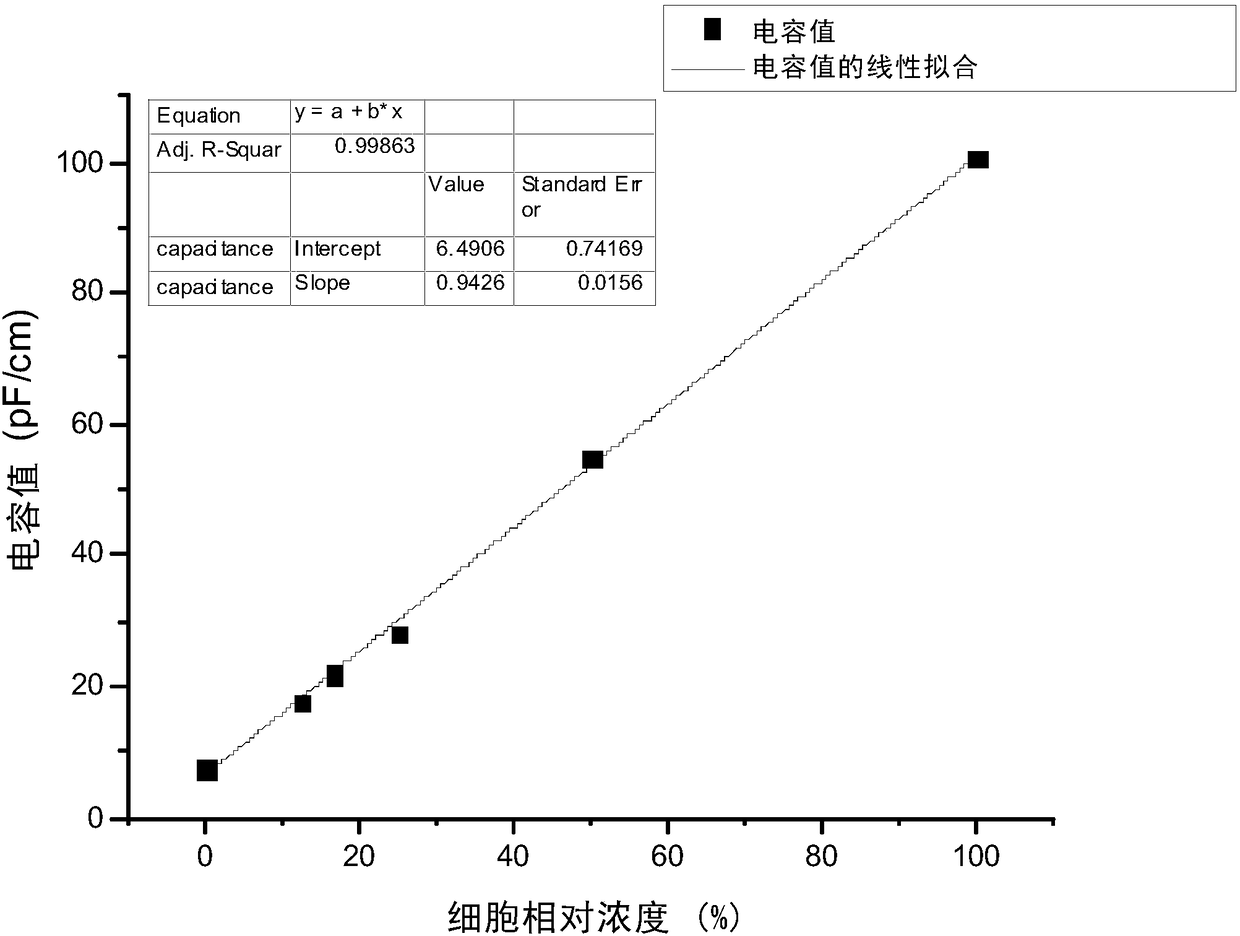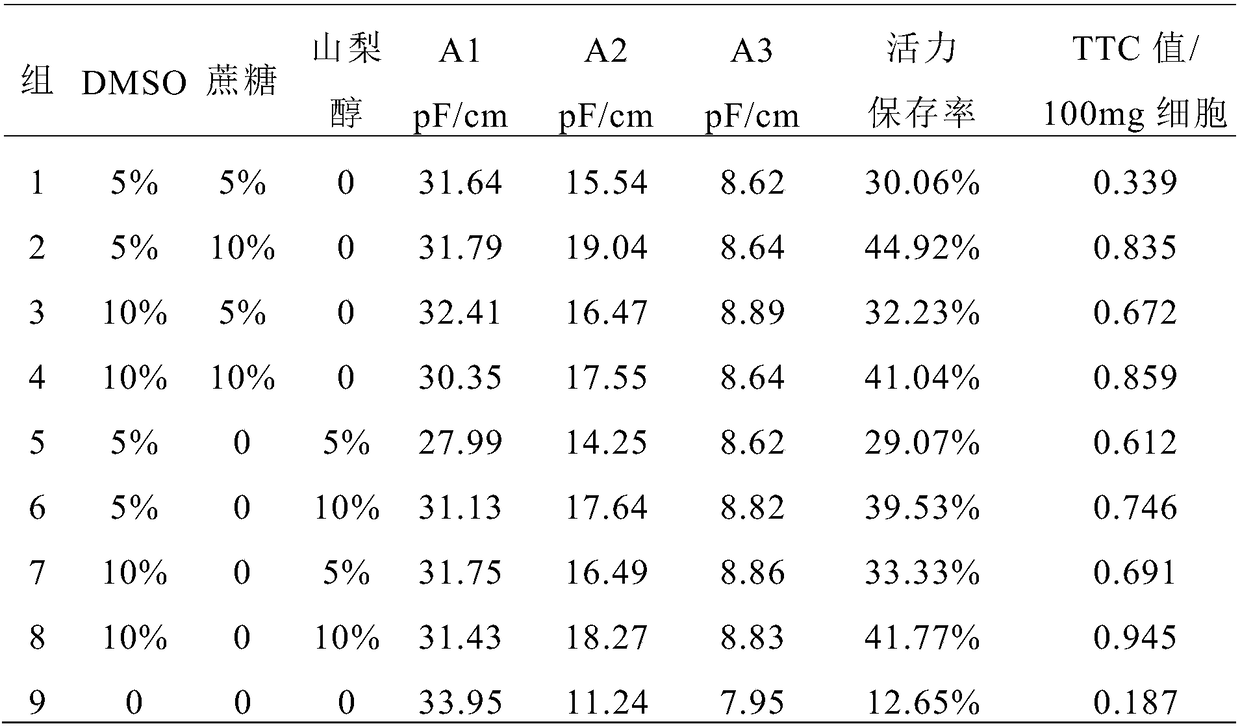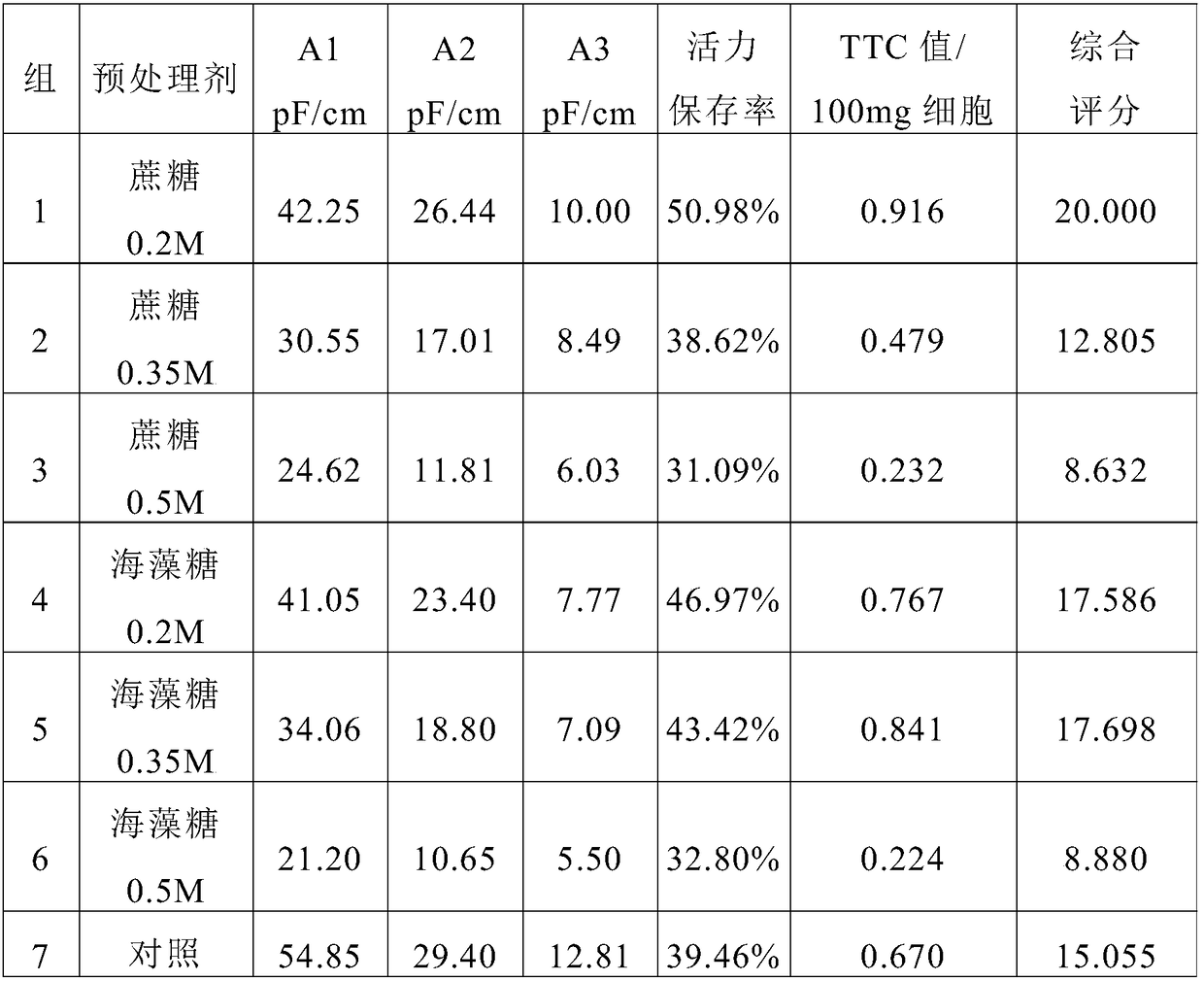Application of live cell sensor in cryopreservation of plant cells
A technology for plant cells and cryopreservation, which is applied in the field of cell detection and can solve problems such as cryopreservation of cells that have not yet been applied
- Summary
- Abstract
- Description
- Claims
- Application Information
AI Technical Summary
Problems solved by technology
Method used
Image
Examples
Embodiment 1
[0081] Embodiment 1, the linear relationship between the capacitance value of living cells and the cell concentration
[0082] The cells in the logarithmic growth phase were used as the initial cells, and the cells were diluted 2, 4, 6, and 8 times respectively, and the capacitance value was measured by a living cell sensor.
[0083] The result is as figure 1 ,From figure 1 It can be seen that the capacitance value of living cells has a good linear relationship with the cell concentration. The cell capacitance value in the logarithmic growth phase is about 100pF / cm, and only the medium solution has a basic capacitance value of about 7pF / cm. After the cells are completely killed, the capacitance value is not much different from the basic capacitance value of the medium. This was also confirmed in subsequent experiments.
[0084] From figure 1 From the results, it can be concluded that the capacitance value of living cells can well characterize the concentration of living ce...
Embodiment 2
[0085] Embodiment 2, the impact of different types of cryoprotectants on cell cryopreservation
[0086] Glycerin, DMSO, sucrose, sorbitol, etc. have been used as cryoprotectants. Among them, glycerin and DMSO are osmotic cryoprotectants, and sucrose and sorbitol are non-permeable cryoprotectants. This example discusses how to choose a cryoprotectant and what concentration to choose to obtain the most excellent protective effect.
[0087] Different concentrations of DMSO (5%, 10%) were mixed with sucrose (5%, 10%) and sorbitol (5%, 10%) as cryoprotectants for research, and the cells were treated with liquid containing 0.35M sucrose After the culture medium was pretreated for 18 hours, the pretreated cells were centrifuged, and after the supernatant was removed, a cryoprotectant was added and incubated at 0-4° C. and 110 rpm for 45 minutes. The incubated cells were first cooled at -20°C for 40 minutes, and then placed in a -80°C ultra-low temperature refrigerator for 24 hours,...
Embodiment 3
[0100] Embodiment 3, the impact of different types of pretreatment agents on cell cryopreservation
[0101] The type of pretreatment agent and the concentration of pretreatment agent are different, which also affect the cryopreservation of cells. When the concentration of pretreatment agent is too high, although the dehydration effect is better, the damage of high concentration pretreatment agent to cells is also relatively large. On the basis of the previous experiments, sucrose 0.2M, 0.35M, 0.5M and trehalose 0.2M, 0.35M, 0.5M were selected for investigation, and the control was the cells that were directly frozen without pretreatment. Freezing time: after 40 minutes at -20°C, store at -80°C for 24 hours; freezing medium: cell growth medium (liquid medium) + 10% DMSO + 10% sucrose; then resuscitate Determination.
[0102] The experimental results are shown in Table 3.
[0103] Table 3. The effect of the type and concentration of pretreatment agent on the activity of cells ...
PUM
| Property | Measurement | Unit |
|---|---|---|
| Concentration | aaaaa | aaaaa |
Abstract
Description
Claims
Application Information
 Login to View More
Login to View More - R&D
- Intellectual Property
- Life Sciences
- Materials
- Tech Scout
- Unparalleled Data Quality
- Higher Quality Content
- 60% Fewer Hallucinations
Browse by: Latest US Patents, China's latest patents, Technical Efficacy Thesaurus, Application Domain, Technology Topic, Popular Technical Reports.
© 2025 PatSnap. All rights reserved.Legal|Privacy policy|Modern Slavery Act Transparency Statement|Sitemap|About US| Contact US: help@patsnap.com



